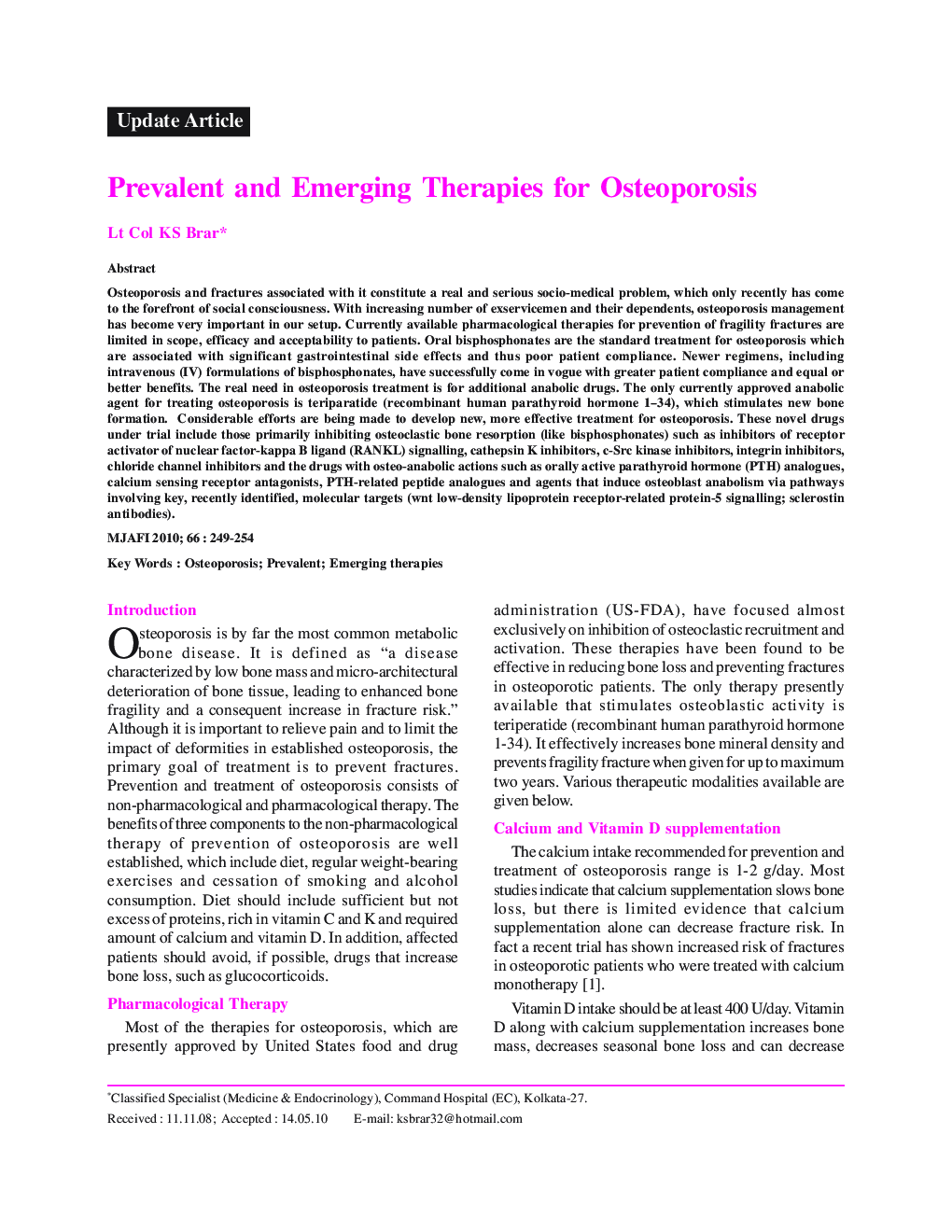| Article ID | Journal | Published Year | Pages | File Type |
|---|---|---|---|---|
| 3161813 | Medical Journal Armed Forces India | 2010 | 6 Pages |
Osteoporosis and fractures associated with it constitute a real and serious socio-medical problem, which only recently has come to the forefront of social consciousness. With increasing number of exservicemen and their dependents, osteoporosis management has become very important in our setup. Currently available pharmacological therapies for prevention of fragility fractures are limited in scope, efficacy and acceptability to patients. Oral bisphosphonates are the standard treatment for osteoporosis which are associated with significant gastrointestinal side effects and thus poor patient compliance. Newer regimens, including intravenous (IV) formulations of bisphosphonates, have successfully come in vogue with greater patient compliance and equal or better benefits. The real need in osteoporosis treatment is for additional anabolic drugs. The only currently approved anabolic agent for treating osteoporosis is teriparatide (recombinant human parathyroid hormone 1–34), which stimulates new bone formation. Considerable efforts are being made to develop new, more effective treatment for osteoporosis. These novel drugs under trial include those primarily inhibiting osteoclastic bone resorption (like bisphosphonates) such as inhibitors of receptor activator of nuclear factor-kappa B ligand (RANKL) signalling, cathepsin K inhibitors, c-Src kinase inhibitors, integrin inhibitors, chloride channel inhibitors and the drugs with osteo-anabolic actions such as orally active parathyroid hormone (PTH) analogues, calcium sensing receptor antagonists, PTH-related peptide analogues and agents that induce osteoblast anabolism via pathways involving key, recently identified, molecular targets (wnt low-density lipoprotein receptor-related protein-5 signalling; sclerostin antibodies).
